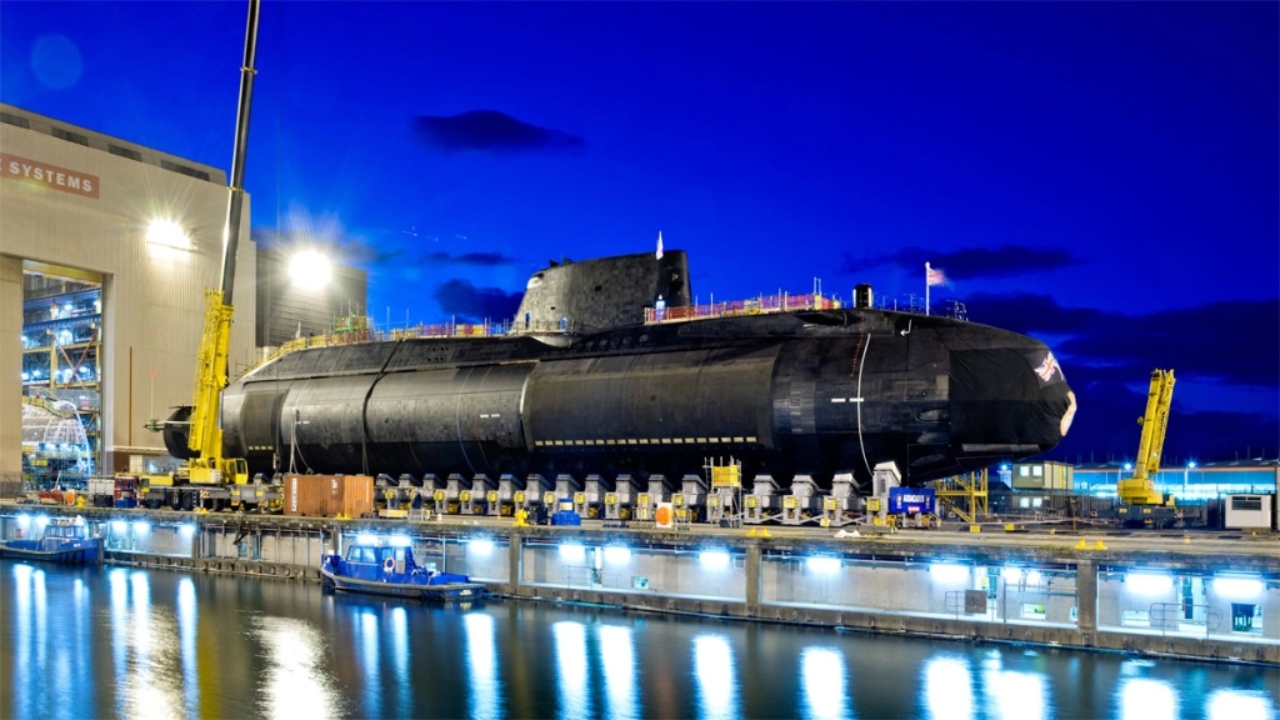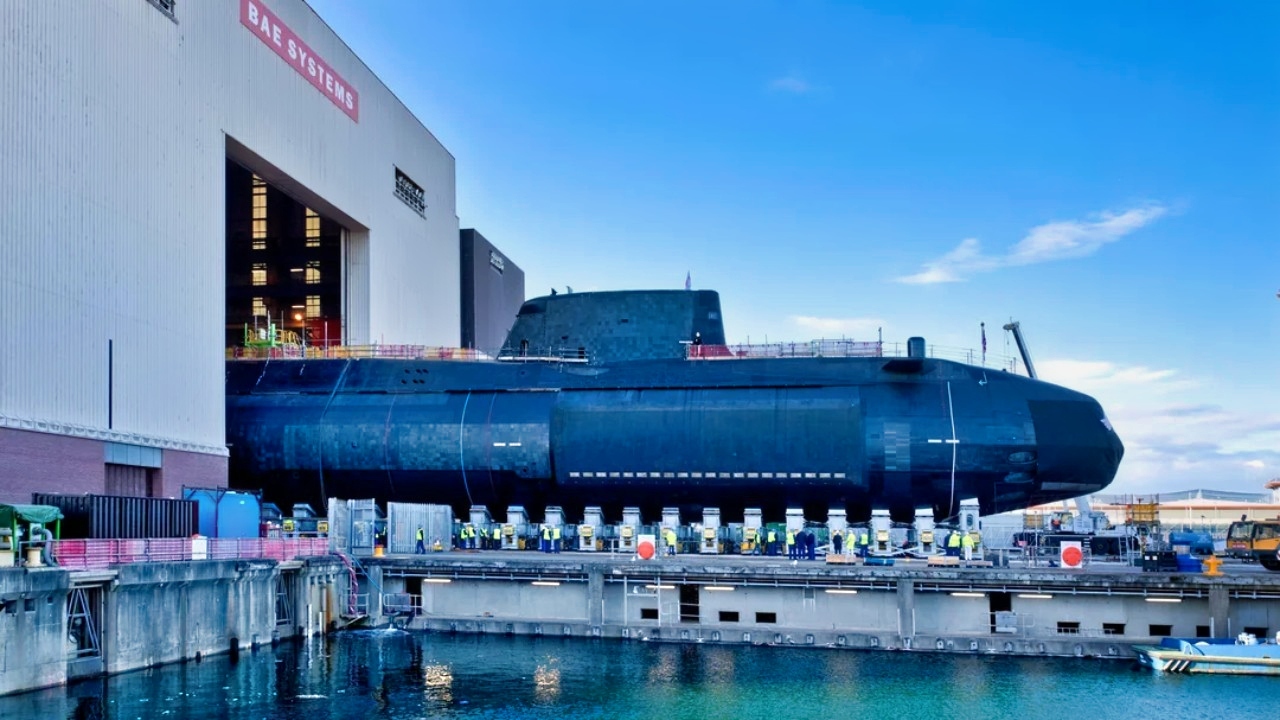Key Points and Summary – Britain’s two Queen Elizabeth-class aircraft carriers promise global reach—but reliability issues, personnel shortages, and budget strain undermine their value.
-HMS Prince of Wales’ propulsion troubles and talk of mothballing one carrier reflect a program outpaced by resources.

ATLANTIC OCEAN (Aug. 8, 2017) The Royal Navy aircraft carrier HMS Queen Elizabeth II sails in formation alongside the Nimitz-class aircraft carrier USS George H.W. Bush (CVN 77) during exercise Saxon Warrior 2017, Aug. 8. Saxon Warrior is a United States and United Kingdom co-hosted carrier strike group exercise that demonstrates interoperability and capability to respond to crises and deter potential threats. (U.S. Navy photo by Mass Communication Specialist 3rd Class Tristan B. Lotz/Released)
-For an island nation, maritime control is existential, yet post-Cold War complacency and the “peace dividend” eroded capacity.
-The piece contends UK strategy should align with geography: carriers, SSNs, and escorts are essential.
-Still, without stable funding and crews, carriers become “white elephants.”
-The real decision isn’t whether carriers are useful—they are—but whether London will prioritize and resource them, or settle for a reduced maritime role.
Should Britain Keep Its Aircraft Carriers? The Royal Navy’s Hard Choice on Queen Elizabeth-Class
In my recent article about Russia’s new “Shtorm” aircraft carrier, I made the somewhat controversial proposition that the Russian Navy does not need aircraft carriers, given the state of its navy and Russia’s geopolitical position.
I won’t go into it here, but today I would like to examine another country and determine whether it truly needs its aircraft carriers.
The UK has been a global naval power since the 1600s, although it reached its peak in the 1700s and 1800s.
Since the end of the Cold War, however, the Royal Navy has been in a state of sharp decline.
Its personnel are decreasing, it is forced to sell off many of its older vessels, its submarine force is sparse, and its carriers are in an inconsistent state of readiness.
All of this raises the question of whether it is time for the UK to move beyond its carrier doctrine.
A Navy in Decline
Aircraft carriers have long been considered essential tools for global power projection. For the UK, which has historically maintained a significant maritime presence, carriers serve as mobile airbases capable of deploying fighter jets and helicopters anywhere in the world.
The Queen Elizabeth-class carriers (HMS Queen Elizabeth and HMS Prince of Wales) are central to this capability.
They allow the UK to participate in international coalitions, respond to crises, and support humanitarian missions without relying on foreign bases. In addition to their military utility, carriers also serve diplomatic functions. Their presence in international waters can signal commitment to allies, deter adversaries, and reinforce the UK’s role as a global actor.

Astute-Class Submarine. Image Credit: Creative Commons/BAE Systems.

Astute-Class Submarine Royal Navy. Image Credit: Creative Commons.
However, the operational reality of the UK’s carriers has been far from ideal. Both ships have experienced significant mechanical issues since their commissioning.
HMS Prince of Wales, for example, has spent only a fraction of its time at sea due to persistent problems with its propulsion system and other technical faults.
These issues have led to delays in deployments and have raised questions about the reliability of the fleet. Critics have pointed out that the carriers are often unavailable when needed, undermining their strategic value and leading some to label them as “white elephants,” expensive assets that fail to deliver on their promises.
Short of Sailors and Funds
Its personnel crisis further exacerbates the UK’s problems. The Royal Navy has struggled with recruitment and retention, despite the carriers being designed to operate with relatively small crews considering their size. Nonetheless, maintaining two large carriers requires a significant investment in human resources, training, and logistics. These challenges are exacerbated by the broader fiscal pressures facing the Ministry of Defence.
The UK’s defence budget is under strain. Although the government has pledged to increase defence spending to 2.5% of GDP by 2027 and potentially to 3% in the next Parliament, these targets are contingent on economic conditions.

Vanguard-Class Submarine. Image Credit: Creative Commons.

Vanguard-Class Submarine From Royal Navy. Image Credit: Royal Navy.
Current spending projections suggest a budget of nearly £60 billion for 2025/26, with a growing share allocated to capital investment rather than personnel. The Queen Elizabeth-class programme alone cost £6.2 billion for the two ships, and their ongoing operational costs continue to place pressure on the budget. In response, the Ministry of Defence has considered placing one carrier in “extended readiness,” essentially mothballing it to save money. This would reduce the UK’s carrier capability by half and raise further questions about the sustainability of the programme.
What Happened to the British Navy?
Returning to the case I made with Russia, the majority of Russia’s sea access is in frozen Polar lands.
Despite its Pacific coastline, Russia’s most significant threats are its land borders with Europe. This geographical position necessitates Russia to invest more in its Army and Air Force than in its Navy. With the UK, the reality is the exact opposite. Britain is an island nation. The biggest threats of invasion have and always will come from the sea or the air. Historically, this was the driving factor that led the British to create a world-dominating Navy and maintain near absolute control of the seas for several hundred years.
Once, the Royal Navy was a globe-dominating force; now we are debating whether they should continue to maintain their last two aircraft carriers. How did we get here?
The answer is that Britton became complacent. Following the end of the Second World War and especially the end of the Cold War, the UK silently relinquished control of the waves to the Americans.
In the post-Cold War “peace dividend,” the collective West prematurely decided that history had reached its end and that world peace was just around the corner. This led to budget cuts in many Western militaries, but the UK’s Navy was particularly hard hit. The Peace Dividend and numerous other social and economic factors (which extend far beyond the scope of this article) contributed to the drastic decline of the Royal Navy.
What I’m trying to say is that Britain’s current defense policy is short-sighted, incompetent, and flies in the face of its geopolitical situation.
The UK should maintain a large fleet of carriers, nuclear submarines, destroyers, and other vessels due to its geographical position; however, its defensive and economic policies have inadvertently hindered its capabilities.
Quite frankly, I’m not sure there is an easy solution to the Royal Navy’s problems (at least, I doubt I will see the British Navy return to its former glory in my lifetime).
Given the current political climate in the UK, it is likely best that the Royal Navy remains a secondary concern.
About the Author: Isaac Seitz
Isaac Seitz, a Defense Columnist, graduated from Patrick Henry College’s Strategic Intelligence and National Security program. He has also studied Russian at Middlebury Language Schools and has worked as an intelligence Analyst in the private sector.
More Military
The U.S. Navy’s Big Aircraft Carrier Mistake Still Stings
Russia’s Big Su-57 Felon Stealth Fighter Mistake Still Stings
Why the F-111B Fighter Still Haunts the U.S. Navy











Colin Hawksford
October 7, 2025 at 11:21 am
I absolutely agree with everything you said. I have been appalled for years watching our armed forces,especially the navy, just being allowed to be relegated almost to 3rd world status. I have always been proud of our maritime heritage, but under successive government’s, since the end of the 2nd World War, we have now become a joke on the world stage. We even have to rely on other navies to replenish our ships at sea.